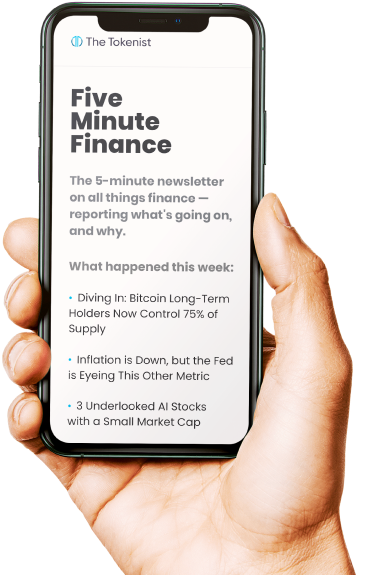
Apple’s AI Gamble: is it Smart Patience or Just Falling Behind?
In early June, Apple released “The Illusion of Thinking” study, demonstrating through puzzle-based tasks that all large language models (LLMs) beyond a certain complexity fail to reason despite having available computational resources to do so. By doing this, the company took a swipe at the emerging narrative that “Apple is falling behind in AI.”
The heavily marketed Apple Intelligence didn’t help to curtail that narrative by getting delayed into 2026’s iOS 19 and MacOS 16 cycle. But even if Apple’s AI-generated news alerts had to be scrapped due to confabulation, isn’t it the right move to not jump all in with AI features? On the other hand, even with advanced pattern filtering creating the illusion of reasoning, AI can break down many processes sufficiently to be productive. After all, this is the main reason why hedge funds are now long on semiconductor stocks.
Rather than falling behind, it seems this is the case of how to properly integrate AI. But what moves is Apple making in that direction?
Adding Ecosystem-Wide AI Layer
Owing to its relationship with OpenAI, Microsoft was the first Big Tech giant to systematically integrate AI features into its ecosystem, from OS to GitHub, with the Copilot launch in early 2023. As an evolved form of Cortana, Microsoft Copilot has since differentiated into Copilot Pro, free and lightweight Microsoft Copilot, Microsoft 365 Copilot as an add-on for business and enterprise, and Microsoft Copilot Studio as the framework for customized generation of AI assistants.
Microsoft users can then deploy these tailored AI assistants into their own workflows or connect them to 3rd party services and apps. This strategy clearly points to vertical specialization, in which the onus is on the user to match their needs for AI. Copilot Studio allows that by utilizing a no-code interface to launch AI agents.
According to a 6-month study by Australia’s National Science Agency on the usefulness of M365 Copilot, the feedback has been largely positive.
Apple’s equivalent to this approach is Apple Intelligence. However, the scope is minor compared to Microsoft, mainly contained in the personal space, from summarization, proofreading, writing tone and photo enhancement to tasking Siri in a seamless manner.
Yet, even fully empowered Siri, as Apple’s future AI master agent, has been delayed in early March into 2026 because “it’s going to take us longer than we thought to deliver on these features.”
Join our Telegram group and never miss a breaking digital asset story.
Apple’s Siri Trouble and Lagging Investments
This is where the “Apple is falling behind AI” narrative gains traction. Namely, to be more useful and accurate, Siri has to fall back to other third-party LLMs such as ChatGPT. In late June, Deepwater Asset Management analysts graded Siri an “F”, describing it as more of a voice-activated search tool than an AI assistant.
They concluded that “Siri on its own is stuck in the last decade.” To that end, Apple is looking at accelerated merger & acquisitions, according to CEO Tim Cook in fiscal Q3 earnings call, purportedly at a rate of one per every several weeks.
“Apple has always been about taking the most advanced technologies and making them easy to use and accessible for everyone, and that’s at the heart of our AI strategy.”
Tim Cook, Apple CEO during fiscal Q3 2025 earnings call (calendar Q2)
In the meantime, as Alphabet, Meta, Microsoft and Amazon are building AI into their core business operations, Cook sees AI devices as “complementary devices, not substitutions.”
So far, the aforementioned four companies are spending $400 billion this year on capex related to AI infrastructure. This is not at all surprising, given that the Big Tech cluster should be understood as the tech extension of the U.S. hegemony, especially against hyper-regulated Europe.
On its own, Apple’s AI investments have been minor. For comparison, while Google and Meta are projected to spend $85 billion and $75 billion during fiscal 2025, respectively, Apple’s capex is 5x smaller. Specifically, in the quarter ending June, Apple allocated $3.46 billion, the highest level since late 2022. If Apple were to maintain that capex rate throughout the fiscal year, it would barely reach $14 billion.
At this point, it may be the case Siri will fully lean on other LLMs, such as Anthropic’s Claude or OpenAI’s ChatGPT, according to Bloomberg’s insider reporting. But if this turns out to be the case, Apple has plenty of cash to power through such an intermediary period until AI quirks are sufficiently resolved for a robust Siri.
Apple Brand Still Strong
On Thursday, Apple reported its fiscal Q3 2025 earnings ending June 28th. Against the analyst consensus, the company outperformed earnings per share (EPS) at $1.57 reported vs $1.43 expected. Likewise, Apple’s $94.04 billion revenue churn outpaced the expected $89.53 billion.
The largest surprise came from the iPhone revenue, Apple’s core business, having outperformed expectations by $4.36 billion to $44.58 billion revenue. It seems that customers are not rushing to embrace the full suite of AI features, as iPhone sales increased 13% year-over-year, pushing Apple’s revenue growth to a quarterly high since late 2021.
President Trump’s tariff regime took an $800 million chunk out of Apple’s revenue, with a projection of $1.1 billion more for the September quarter. In late April, Apple announced plans to move its US phones manufacturing out of China to India. However, the most recent tariff hikes place India in a bind with a 25% tariff increase, up from 10%.
As a result of renewed tariff-driven market volatility, AAPL stock is down nearly 5% over the week, currently priced at $204.23 per share. According to WSJ’s forecasting data, this is well under the average AAPL price target of $231.23, making for an enticing exposure entry for latecomers.
Disclaimer: The author does not hold or have a position in any securities discussed in the article. All stock prices were quoted at the time of writing.




